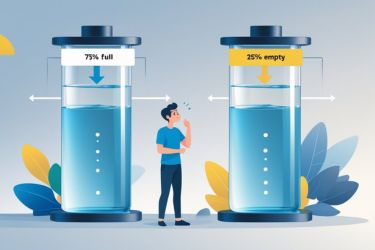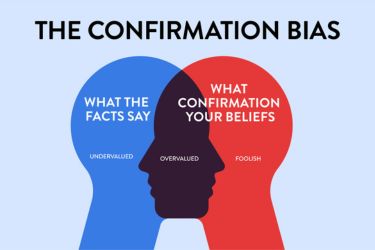We often rely on the information that comes to mind most easily when making decisions or forming opinions, but this can lead us to errors in judgement. The availability cognitive bias is our tendency to rely on information that is most recent, vivid, or memorable, rather than all relevant facts. This shortcut can make us overestimate risks, misjudge likelihoods, or even repeat mistakes.

Understanding how this bias works can help us spot it in our daily lives, from news headlines to important choices. By learning about its origins and impact, we put ourselves in a better position to make decisions based on balanced and objective information.
Key Takeaways
- The availability cognitive bias affects how we judge information and risks.
- It shapes our decisions based on what we can remember rather than full facts.
- Recognising it can help us make better, more thoughtful choices.
Understanding the Availability Cognitive Bias

Availability cognitive bias, also known as availability bias, is key for understanding how our minds handle information. This bias shapes the way we judge how common or likely an event is by focusing on what easily comes to mind, which can often lead to mistakes in decision-making.
Definition and Key Concepts
Availability cognitive bias is a type of cognitive bias where we give extra weight to information that is easy to recall. If we recently read or saw something, it tends to influence our judgement more than facts that are harder to remember. For example, if we hear about plane crashes on the news, we might overestimate how often they happen.
This bias often occurs outside our awareness. We don't always stop to think about whether the examples we recall actually reflect reality. Instead, our brains use these easy-to-access memories as if they represent the bigger picture.
Key points:
- Relies on recent or vivid information
- Can lead to errors in estimating risks or frequencies
- Is not always a conscious process
The Role of Mental Shortcuts
Our brains often use mental shortcuts, or heuristics, to make fast choices. The availability heuristic, a mental shortcut, lets us quickly judge how likely something is based on recent memories or information. These shortcuts help us save time and mental energy.
However, this can cause problems. If certain information is easy to remember—maybe because it was emotional or widely reported—we may think it happens more often than it does. For instance, after hearing about shark attacks, we might think they are more common than accidents like slipping in the bathroom, though statistics show otherwise.
Using the availability heuristic is helpful in many cases, but it can skew our judgement by favouring what stands out rather than what is most accurate.
Bounded Rationality and Human Brain Limitations
Our decision-making isn't perfect because our brains have limits, a concept known as bounded rationality. We can't process all available information, so we rely on what is easiest to recall, even though it may not be complete or accurate.
This means we often overlook important facts that are harder to remember. The availability bias is a result of these brain limitations. When we're faced with too much information, our minds simplify things by using what's handy, even if it's misleading.
Bounded rationality underscores that our decisions are shaped not just by facts, but by how our minds handle and prioritise information. This highlights the challenges in reaching fully rational decisions.
Origins and Development in Psychology

The availability cognitive bias has its roots in efforts to understand how people judge likelihood based on mental shortcuts. Research in psychology has shown that this bias plays a central role in how we make decisions under uncertainty and why errors in judgement often occur.
History of Availability Heuristic
The term "availability heuristic" was first introduced in the early 1970s. Psychologists began noticing that people often estimate the frequency or probability of events based on how easily examples come to mind.
This shortcut is especially active when we make quick decisions. For instance, after hearing about news stories of plane crashes, we may overestimate their frequency simply because those examples are more memorable.
Researchers saw the availability heuristic as one of several mental shortcuts that help people save time and effort in decision-making. However, it can lead to systematic errors, which are now called cognitive biases.
Research by Daniel Kahneman and Amos Tversky
Daniel Kahneman and Amos Tversky were central figures in the study of cognitive biases. Their experiments in the 1970s and 1980s showed how people use the availability heuristic in real-life situations.
They found that when people are asked to judge the likelihood of events—such as words that start with a certain letter—most use the ease with which examples come to mind as evidence for their judgement. This research revealed why our memories can lead to faulty conclusions.
Kahneman and Tversky’s work demonstrated that cognitive biases, such as the availability bias, affect judgements in many domains, from finance to health and safety.
Heuristics and Biases Framework
The heuristics and biases framework was developed to organise the different ways people simplify complex choices. It describes how we rely on heuristics—mental shortcuts—that are useful but can cause predictable errors when the shortcuts mislead us.
Key features of this framework include:
- Judgement under uncertainty: We often make decisions with limited information.
- Systematic errors: Heuristics like the availability heuristic make certain mistakes more likely.
This approach has shaped modern psychology by helping us understand why cognitive biases happen and how they influence our reasoning every day. By studying these processes, we can better recognise when our judgements might be biased and why.
Mechanisms and Influencing Factors

Several elements shape the way the availability bias works in our minds. These include how easily we can bring examples to mind, the role of news and vivid stories, and the effects of strong emotions or recent experiences.
Ease of Retrieval
Ease of retrieval refers to how quickly and simply we can remember something. Our brains use this mental shortcut to judge how common or likely an event is based on how easily we can recall related examples.
For instance, when we hear about airplane accidents often, we might think they happen more frequently than they actually do. The more examples that come to mind with little effort, the stronger our belief in their regularity.
This mechanism is automatic. We don’t always realise we’re relying on easily remembered information, which can lead to skewed perceptions and decisions.
Media Coverage and Vivid Information
Media coverage is a powerful driver of the availability bias. We’re bombarded with news stories that often focus on dramatic, rare, or shocking events because these attract attention.
This information is usually clear, vivid, and memorable. Stories with detailed images or intense language tend to stick in our memory, making them easier to recall than dull or routine events. For example, reports about natural disasters can make us fear them more, even if they are statistically rare.
Our judgement is shaped more by what the media chooses to highlight than by actual risk or frequency. Vivid information combined with repeated coverage amplifies the effect even more.
Emotional Impact and Recency
Events that trigger strong emotions—like fear, happiness, or anger—become more accessible in our memory. Our brains store emotional memories more deeply, so these events come to mind quickly when thinking about risks or possibilities.
Recency also matters. The most recent events feel more important simply because they are fresh in our minds. If we’ve just seen or heard about something, we’re much more likely to overestimate its frequency or importance.
The mix of strong feelings and recent exposure leads us to make quick judgments and decisions based on what stands out emotionally, not necessarily on what is most likely or safest.
Examples and Real-World Applications

The availability bias affects many of our decisions, often causing us to overestimate rare events and rely too much on vivid examples. We see its influence in travel choices, risk perception, money decisions, and academic evaluations.
Plane Crashes and Air Travel Decision Making
When we hear about plane crashes in the news, those stories often stick in our minds for a long time. Because of this, many people think flying is much more dangerous than it really is. This feeling can lead us to avoid air travel, even though plane crashes are extremely rare.
Statistics show that commercial flying is much safer than driving, yet our fear of flying is driven by memories of dramatic crashes. The availability bias causes us to focus on highly publicised accidents instead of the real, low level of risk. This can change the way we plan holidays or business trips and even influence our views on airline safety.
Quick Comparison
| Travel Method | Actual Risk (per mile) | Public Perception |
|---|---|---|
| Airplane | Very low | Often perceived as high |
| Car | Higher | Often perceived as lower |
Shark Attacks and Perceived Risks
We often believe shark attacks are common threats at the beach. This is mostly because the media reports every incident in detail, making these rare events easy to remember. The actual risk of being attacked by a shark is incredibly low.
Our minds pay more attention to frightening, dramatic examples, causing us to overestimate the danger. Because of availability bias, some of us avoid swimming in the sea, or we worry more than necessary about something very unlikely to happen. This bias inflates our fear of shark attacks beyond what statistics support.
Lottery Wins and Financial Decisions
Lottery winners are often featured in the media, with big stories about unexpected wealth. As a result, we may think it is much more likely to win than it really is. The availability bias causes us to focus on these rare, memorable outcomes, not on the millions who lose.
This can lead us to spend more money on tickets, chasing a dream that is very unlikely. We remember the winners and overlook the odds. The same pattern affects other games of chance, leading us to make decisions with a false sense of possibility.
Key Points
- Media coverage makes wins seem common
- True odds of winning are extremely low
- Many people ignore the risks and keep buying tickets
Course Evaluation Biases
When students fill out course evaluations, recent or emotional experiences often influence their feedback the most. If something memorable happened, like a mistake or an exciting lesson, it stands out and shapes their opinions. Students might focus on a single lecture or assignment instead of the whole course.
This availability bias means that course ratings can depend on what is fresh in the student's mind, not the course's overall quality. As a result, decisions about course changes or teachers’ performance may be guided by isolated incidents rather than balanced evaluation.
Teachers and administrators must be aware of this bias when using evaluations to make important choices.
Consequences and Impact on Decision-Making
The availability cognitive bias leads us to judge situations based on information that is most easily remembered. This tendency can influence our behaviour, our perception of risks, and the choices we make every day. It can also shape policy outcomes and opinions at a larger scale.
Distorted Risk Assessment
When we rely on information that comes to mind quickly, our perception of risk becomes skewed. For example, we may overestimate the likelihood of dramatic events such as plane crashes or natural disasters if we recently heard about one in the news. Meanwhile, we might underestimate more common but less reported dangers, like car accidents or heart disease.
This happens because vivid and recent memories feel more significant, even if statistics say otherwise. The availability bias makes it difficult for us to accurately weigh real probabilities, especially in high-stress or uncertain situations. In turn, this can lead to misinformed health decisions or poor financial planning.
Implications for Everyday Judgement
The impact of the availability bias shows up in our daily lives more than we might realise. For instance, we may choose products, make investments, or form opinions based on the most recent advertisements, news stories, or conversations we remember. This means we are not always making choices based on the best or most relevant information.
It can also affect our relationships, such as when we recall bad moments more easily than good ones, shaping our perceptions of others unfairly. The bias is especially present whenever we must make quick decisions under uncertainty, which can amplify errors and reinforce stereotypes or misconceptions.
Common everyday examples:
- Buying a product we saw in a recent ad, even if it is not the best option.
- Assuming crime rates are rising because of a few high-profile cases, despite trends showing otherwise.
- Remembering only recent news, leading to overreactions or misplaced concerns.
Policy and Social Effects
The availability bias does not only shape personal choices; it extends into society and policy. Policymakers and leaders can be influenced by recent or highly publicised events, leading to reactive decisions instead of measured responses. For example, a single highly publicised incident might result in new laws or regulations, even if it's not representative of wider risks or needs.
This bias can affect funding allocation and impact which issues receive attention. If the public or media focus on specific dangers, even rare ones, governments may direct resources away from more prevalent but less dramatic concerns. This can leave important problems underfunded or ignored.
Understanding how the availability bias shapes judgment under uncertainty is crucial for improving both our own decisions and the choices made at a larger scale. By recognising this bias, we can look for more balanced information before taking action or making policy.
Strategies to Mitigate the Availability Cognitive Bias
The availability cognitive bias often leads us to make decisions based on information that comes to mind quickly, rather than on complete or balanced data. Addressing this bias requires deliberate action, including building awareness, applying critical thinking, and seeking out diverse sources.
Awareness and Education
We can start by learning to recognise the availability heuristic as it appears in our everyday lives. For example, we may think certain events are more common simply because we hear about them more often in the news or on social media.
Education about biases can help us spot patterns in our thinking where recent or vivid examples unfairly shape our judgment. Training workshops, self-reflection, and reading about cognitive biases allow us to understand how these shortcuts work.
Keeping a mental note when something feels "too obvious" or "stands out" alerts us that our thinking might be influenced by readily available memories. By reminding ourselves of the tendency to overestimate the frequency of dramatic events, we can slow down our decision making and check our assumptions.
Critical Thinking Approaches
Practising critical thinking gives us tools to question first impressions and challenge information that is fresh in our memory. We should regularly ask ourselves if our choices are based on facts or simply on what we have seen or heard most recently.
Using specific questions, such as "What evidence do I have?" or "Are there reliable statistics?" forces us to investigate further. We can also apply simple checklists or decision-making frameworks that require looking for alternatives.
A useful approach is discussing our thoughts with others who might have different experiences. When we examine our reasoning together and listen for how the availability heuristic might be guiding us, our choices can become more balanced and rational.
Seeking Comprehensive Information
Relying solely on a few examples makes our decisions less accurate. We should make it a habit to gather information from several reliable sources before forming a conclusion.
A practical method is to use tables to weigh different pieces of evidence:
| Source | Evidence Strength | Recency | Relevance |
|---|---|---|---|
| News Articles | Medium | High | Moderate |
| Government Data | High | Medium | High |
| Academic Studies | High | Low | Strong |
By comparing details from these different sources, we reduce the effect of any one memory or vivid story. Fact-checking and considering statistics help us move beyond what is simply available or memorable, leading to more thoughtful and accurate decision making.
Frequently Asked Questions
We often encounter situations where the way we judge information changes our decisions. Different mental shortcuts, or heuristics, can cause us to make mistakes in assessing facts, risks, and memories.
What is an example of availability heuristic influencing decision-making?
When we hear frequent news stories about plane crashes, we may become more afraid of flying. This happens even though flying is safer than driving. Our fear grows because stories of crashes are easier to recall than stories about safe flights.
How does the availability heuristic differ from confirmation bias?
The availability heuristic is about using information that comes quickly to our mind when making choices. Confirmation bias happens when we search for or favour information that matches our existing beliefs. While availability relies on memory, confirmation seeks support for what we already think.
In what ways can hindsight bias impact the interpretation of past events?
With hindsight bias, we tend to believe that events were more predictable after they have already happened. This can lead us to think we "knew it all along," even if we did not. Our judgment about past decisions may also become too harsh or overconfident.
What distinguishes the representativeness heuristic from the availability heuristic?
The representativeness heuristic leads us to judge situations or people based on how much they resemble a certain category. In contrast, the availability heuristic is based on how easily examples come to mind. One sees patterns, while the other depends on memorable information.
How does anchoring bias interact with the availability heuristic in judgement?
Anchoring bias occurs when we rely too much on the first piece of information we receive. If this first piece is also easy to recall, the availability heuristic can strengthen the anchor's effect. This leads us to make further choices based on both the anchor and what we remember most clearly.
Can you explain the meaning and implication of the availability heuristic in psychology?
The availability heuristic is a mental shortcut that helps us make quick judgments by using whatever information is easiest to recall. This can help us decide faster, but it often leads to overestimating risks or commonness of certain events. In psychology, understanding this helps us spot errors in our everyday thinking.

















